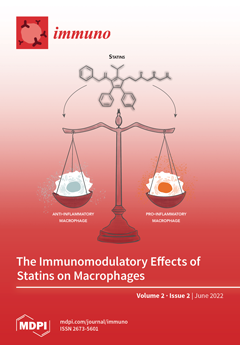Clostridium perfringens, a prevalent Gram-positive bacterium, causes necrotic diseases associated with abundant life loss and economic burdens of billions of USD. The mechanism of
C. perfringens-induced necrotic diseases remains largely unknown, in part, because of the lack of effective animal models
[...] Read more.
Clostridium perfringens, a prevalent Gram-positive bacterium, causes necrotic diseases associated with abundant life loss and economic burdens of billions of USD. The mechanism of
C. perfringens-induced necrotic diseases remains largely unknown, in part, because of the lack of effective animal models and the presence of a large array of exotoxins and diverse disease manifestations from the skin and deep tissues to the gastrointestinal tract. In the light of the advancement of medical and veterinary research, a large body of knowledge is accumulating on the factors influencing
C. perfringens-induced necrotic disease onset, development, and outcomes. Here, we present an overview of the key virulence factors of
C. perfringens exotoxins. Subsequently, we focus on comprehensively reviewing
C. perfringens-induced necrotic diseases such as myonecrosis, acute watery diarrhea, enteritis necroticans, preterm infant necrotizing enterocolitis, and chicken necrotic enteritis. We then review the current understanding on the mechanisms of myonecrosis and enteritis in relation to the immune system and intestinal microbiome. Based on these discussions, we then review current preventions and treatments of the necrotic diseases and propose potential new intervention options. The purpose of this review is to provide an updated and comprehensive knowledge on the role of the host–microbe interaction to develop new interventions against
C. perfringens-induced necrotic diseases.
Full article





